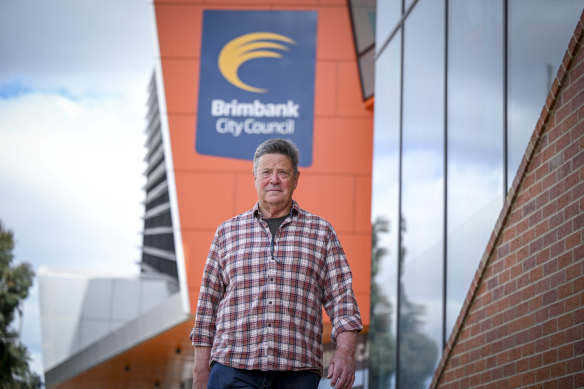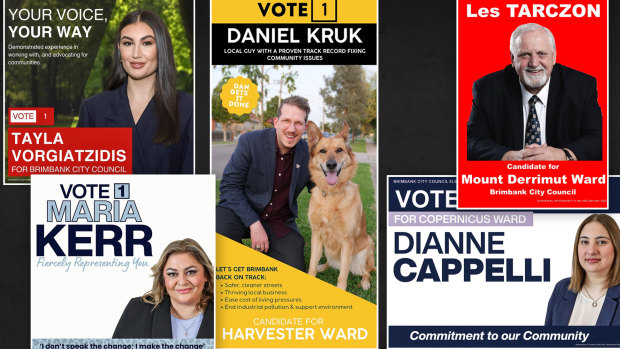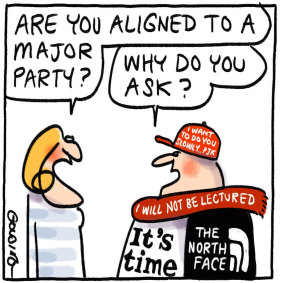This was published 4 months ago
Many of your local election candidates appear to be independent. Our survey reveals otherwise
By Rachael Dexter and Nathanael Scott
Voting in state and federal elections is usually straightforward: blue means Liberal, red means Labor, green means Greens, and independents are usually just that: independent of a party. But in council elections, the issue is much murkier.
In a major survey of candidates on key issues, The Age heard from 677 of the 1478 candidates running for council elections in Greater Melbourne this month. We asked them if they were a member of a political party – information they don’t legally have to disclose to the Victorian Electoral Commission (VEC).
Use our interactive to see who the candidates are in your area and what they said on key issues. The candidates’ responses will be updated in a week.
If you are reading this article on our app and the interactive does not load, click here.
Of those who responded, 53 per cent said they were not members of a political party or interest group, while 14 per cent were members of the Labor Party, 11 per cent Greens, 12 per cent Liberal and 4 per cent Victorian Socialists. Minor parties and groups make the remaining 6 per cent.
Traditionally, a non-party candidate would be referred to as an independent, but under the Victorian voting system, the concept of a true independent is murky.
Candidates may answer a voluntary VEC questionnaire, which asks only: “Are you endorsed by a registered political party?” They are not obliged to answer it, nor are they required to disclose if they are a rank-and-file party member. Questionnaires were introduced in 2016.

Former Brimbank councillor and mayor John Hedditch wants greater transparency.Credit: Eddie Jim
Endorsement means that party members have formally preselected a candidate. This status provides them with access to campaign resources and allows them to use the political party’s branding and logos.
But in this election, there are many apparently “independent” candidates who, while not formally endorsed, are current members of a party. This could influence how they direct preferences and how they vote on their council, while they are under no legal obligation to tell voters of their party membership.
The Age’s survey reveals this chasm of transparency. For example, according to responses to the VEC questionnaires, there are no formally endorsed Labor Party members running in Brimbank in the city’s west – traditional Labor heartland.
But when surveyed, at least six Brimbank candidates revealed to The Age they are members of the Labor Party: Daniel Kruk, Frank Leo, Kim Thien Truong, Les Tarczon, Tayla Vorgiatzidis and Vasko Naumovski. Only two Brimbank councillors – Ian Douglas and Sam David – volunteered their Labor Party membership in their VEC candidate statement, which is online and will be mailed to voters.

Campaign flyers for Brimbank council candidates Tayla Vorgiatzidis, Daniel Kruk and Les Tarczon, who are Labor Party members, and Maria Kerr and Dianne Cappelli, who are Liberal Party members.Credit: Monique Westermann
Kruk is using yellow branding with no mention of his Labor Party membership, while other candidates, like Naumovski, Vorgiatzidis and Tarczon, are using red signage with no official Labor logos.
Under Labor Party rules, even unendorsed party members must preference other Labor Party members during elections, and they are bound to work with other Labor members on council to choose a mayor and “act within ALP policy parameters as determined by state conference”.
A well-placed Labor insider said some candidates who were party members ran as independents to appeal to voters who “don’t think there should be partisan politics in council”.
The issue isn’t isolated to Labor. Also in Brimbank, councillors Maria Kerr and Dianne Cappelli said they were Liberal Party members when surveyed by The Age, but their branding does not mention the word Liberal, nor does their candidate statement. The Liberal Party is not formally endorsing any local councillors, except for candidates in the City of Melbourne, led by lord mayoral candidate Mariam Riza.
By contrast, Greens members can run only as officially endorsed candidates and must resign from the party if they want to run for council without endorsement.
Some party members spoken to by The Age defended the current system which allows them to influence and shape their parties as a member, but promote themselves first and foremost as a local without the “burden” of party branding. They say it also allows them to freely speak out against policies of their party at a state or federal level that may impact their community.
‘Voters have a right to know who they’re voting [for]. So, if local government candidates are members of a political party, that information should be made public.’
Clancy Moore, Transparency Australia CEO
Port Phillip candidate Lauren Sherson – who is branding herself an “independent Liberal” (she is a rank-and-file party member but not formally endorsed), said a push towards disclosure would mean parties would be forced to endorse candidates, which wouldn’t be a good outcome for her.
“Even if the Liberals had an endorsed candidate at a local level, I wouldn’t want to do that,” she said.
“I’m loving this election … [because] I don’t need to seek approval from [party members] and competing for a pool of money and policies.
“It’s about the freedom and choice – I get to use my own conscience and mouth. I’ve got 24 different policies for the ward. That would never happen if I was told [by the party] ‘here are the five you have to run with’.”
But she conceded the phrase “independent Liberal” was confusing for voters. “There’s endless confusion, this whole thing,” she said.
But others say political party membership is a key attribute that should be consistently disclosed for voters to make informed choices.
Former Brimbank mayor John Hedditch said that during his time on Brimbank council between 2016 and 2020, he saw a number of “independent” councillors consistently aligning themselves with a ruling Labor faction.
“It was obvious that there were people who were saying they were independent and weren’t,” he said.
During his time on council he proposed a public register on Brimbank council’s website for councillors to reveal their political party affiliations (something that is not standard across councils), which was enacted by a later cohort of councillors.
He wants to see Victoria brought into line with other states such as Queensland, where candidates must declare on their nomination form if they are members of a political party (endorsed or not), including for the year leading up to the election.
Transparency International Australia echoed the call.

Credit: Matt Golding
“Voters have a right to know who they’re voting [for]. So, if local government candidates are members of a political party, that information should be made public, as it forms a vital part of how the candidate might vote, act and what policies they will take forward,” said chief executive Clancy Moore.
“Following the lead from NSW, Queensland and South Australia, Victoria should make it mandatory for all candidates to disclose whether they are a member of political party. This would help build trust in our political system and contribute to local democracy.”
After the last council elections in 2020, the VEC also recommended to the state government a tighter standard of disclosure of political party status.
“Post-election feedback from voters identified that candidates are not consistently disclosing their affiliation with political parties and other interest groups, noting that candidates who choose to complete the candidate questionnaire are only asked to disclose their association when they are endorsed by a political party,” the VEC report said.
“The public’s desire for information about candidates’ political party associations appears to call for a lower threshold than formal endorsement.”
A spokeswoman for Local Government Minister Melissa Horne said disclosing political affiliations in Victoria was not mandatory “as voters may be misled into believing a candidate will be officially representing a political party”. She said it was up to candidates whether to disclose membership in their candidate statements.
But Dean Hurlston, president of activist group Council Watch, also backed changes requiring disclosure of all party memberships during nominations.
“We know that many candidates hide political memberships, and whether people like it or not, everyone is inherently political, and candidates would be best to be transparent,” he said.
Start the day with a summary of the day’s most important and interesting stories, analysis and insights. Sign up for our Morning Edition newsletter.